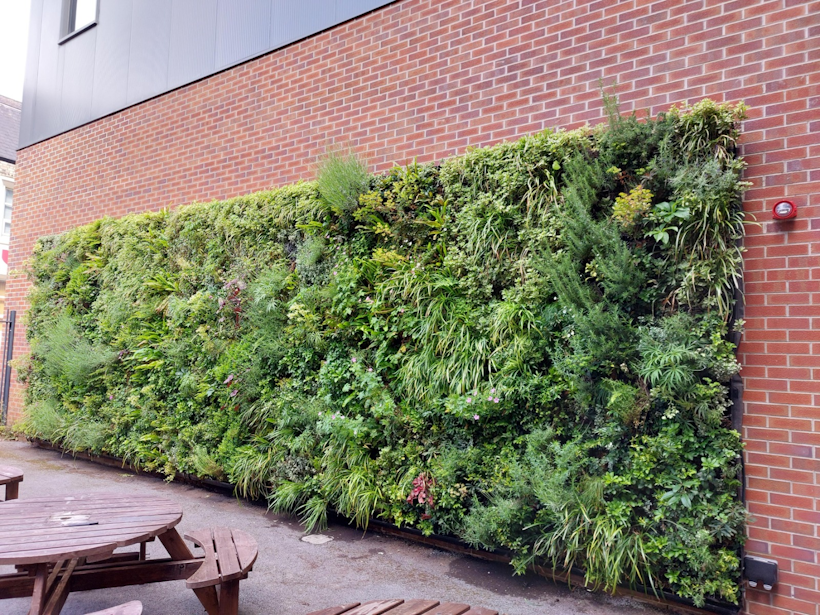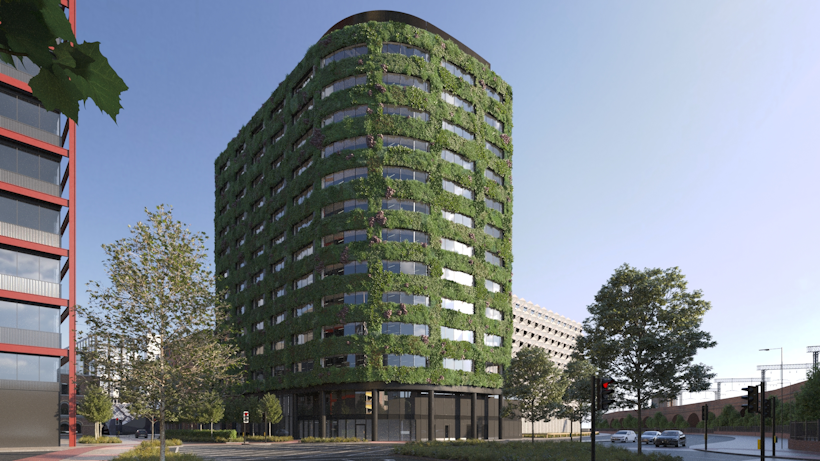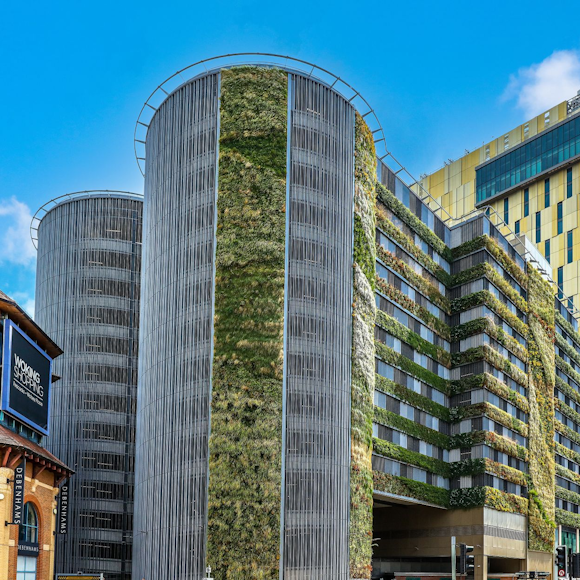Ecological architecture is a crucial aspect of sustainable urban development and living walls have emerged as a powerful tool in this field.
As specialists in living wall systems, we at Viritopia understand the importance of conducting thorough lifecycle assessments to ensure the long-term environmental benefits of our projects.

The importance of Lifecycle Assessment
Lifecycle assessment (LCA) is a comprehensive approach to evaluating the environmental impact of a product or system throughout its entire lifespan. For living walls, this assessment is particularly crucial as it helps us understand and optimise the sustainability of these green infrastructure solutions.
Key stages in the lifecycle of living walls
Design and planning
The lifecycle of a living wall begins with careful design and planning. This stage involves selecting appropriate plant species, designing the support structure, and integrating irrigation systems. Our experience with over 5,880 completed projects informs our design process, ensuring optimal performance and longevity.
Production and installation
At Viritopia, we grow our living systems close to the final installation site. This approach ensures that plants are fully acclimatised before installation, increasing their resilience and establishing the system more quickly.
Operational phase
During the operational phase, living walls provide numerous benefits:
- Air Quality Improvement: Our living walls can trap up to 25,604 kg of dust per year, significantly improving air quality in urban environments.
- Biodiversity Enhancement: Living walls create havens for biodiversity, supporting local ecosystems.
- Energy Efficiency: Green walls enhance thermal performance by providing insulation and reducing heat gain, contributing to energy conservation in buildings.
Maintenance and longevity
Regular maintenance is crucial for the longevity and effectiveness of living walls. Our expertise in green infrastructure systems allows us to provide comprehensive maintenance services, ensuring the long-term success of each installation.
End-of-life considerations
While living walls have a long lifespan, it's important to consider end-of-life scenarios. This includes the potential for recycling or composting plant material and repurposing structural components.

Environmental benefits throughout the lifecycle
Living walls offer significant environmental benefits throughout their lifecycle:
- Carbon Sequestration: The plants in living walls actively absorb CO2, contributing to carbon offset strategies.
- Urban Heat Island Mitigation: By providing natural cooling through evapotranspiration, living walls help combat the urban heat island effect.
- Stormwater Management: Green walls can assist in managing stormwater runoff, reducing pressure on urban drainage systems.

Case study: Europe's largest living wall
One of our projects, Europe's largest living wall in Salford, exemplifies the potential of living walls when lifecycle assessment principles are applied.
With almost 4000m² of living wall comprising 350,000 plants, this project demonstrates the scale at which these systems can be implemented to create significant environmental impact.

Book a consultation with Viritopia
Understanding the lifecycle assessment of living walls is crucial for maximising their environmental benefits and ensuring their long-term success.
At Viritopia, we leverage our extensive experience and commitment to sustainability to create living wall systems that not only beautify urban spaces but also contribute significantly to ecological architecture and sustainable urban planning.
Book a living wall consultation with our expert team today to find out how we can help you with your living wall project.

